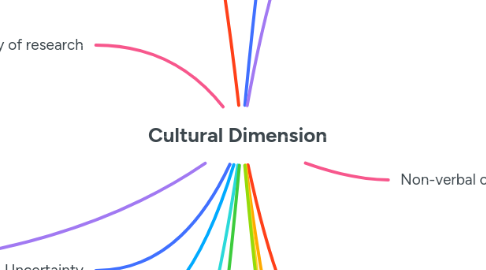Cultural Dimension
par BẢO NGUYỄN GIA


1. Hofstede
1.1. Geert Hofstede collected data from employees of IBM in the late 1960s and early 1970s to identify four dimensions: uncertainty avoidance, power distance, and long- term orientation. His work has been criticized for focusing too much on national cultures.
1.2. individualism /collectivism
1.3. UNCERTAINTY AVOIDANCE
1.4. POWER DISTANCE
1.5. Masculinity/ Femininity
2. Survey of research
2.1. anthropology
2.2. linguistics
2.3. sociology
2.4. geography
2.5. business studie
2.6. communication science
2.7. psychology
2.8. history
3. Trompenaars
3.1. research on 15,000 managers found three main cultural dimensions: relationships with people, attitudes to time, and attitudes to the environment.
4. Uncertainty
5. Male and Female
6. Nature
6.1. Control: people can dominate their environment; it can be changed to fit human needs
6.2. Harmony: people should live in harmony with the world around them
6.3. Constraint: people are constrained by the world around them. Fate, luck, and change all play a significant role.
7. Individual and group
7.1. Individualism
7.2. Universalism
7.3. Particularism
8. Hall
8.1. Hall's work on low- and high-context cultures and time is popular today.
9. Kluckhohn and Strodtbeck
9.1. Human nature
9.1.1. Humans are divided into two extremes: those who view humans as evil and those who view them as good.
9.2. Man-nature relationship
9.2.1. Man should live in harmony with nature, not control it.
9.3. Time sense
9.3.1. Past, present, and future orientations
9.4. Activity
9.4.1. The most important idea is that there are two types of people: inner development and action orientation.
9.5. Social relations
9.5.1. Individualism, collective decisions, individualism, and equal rights.
